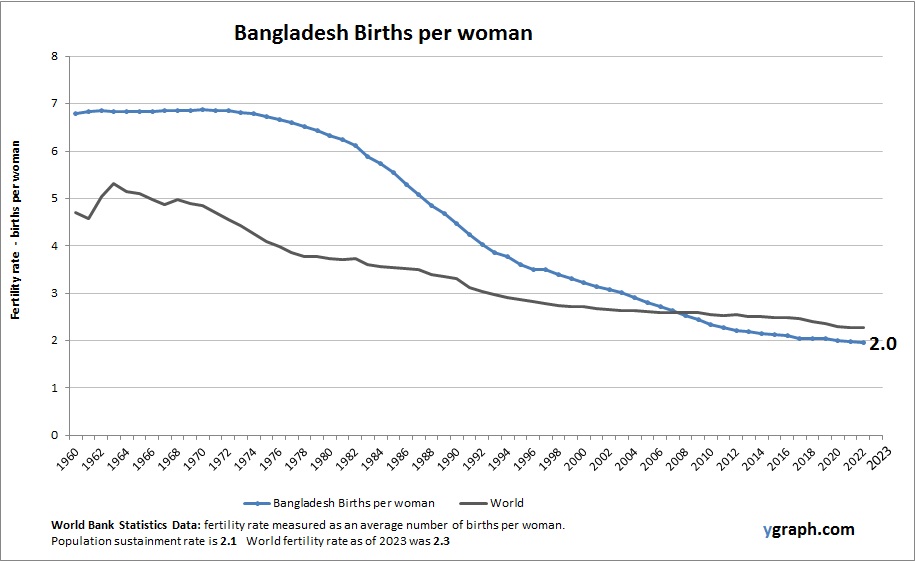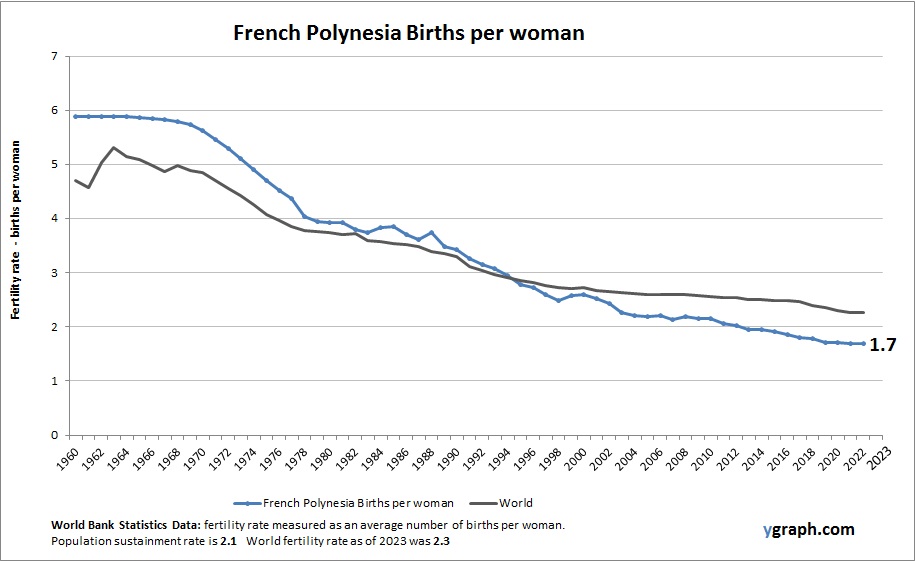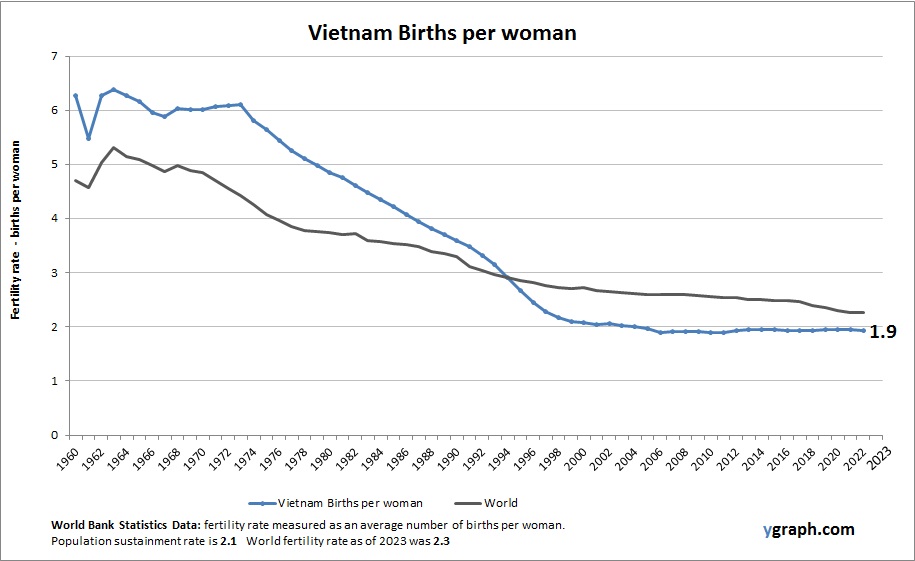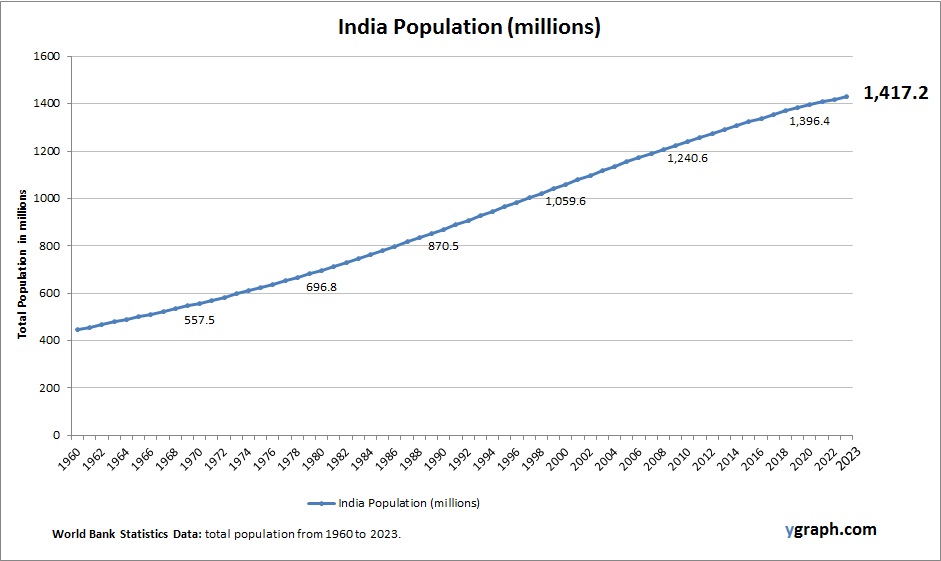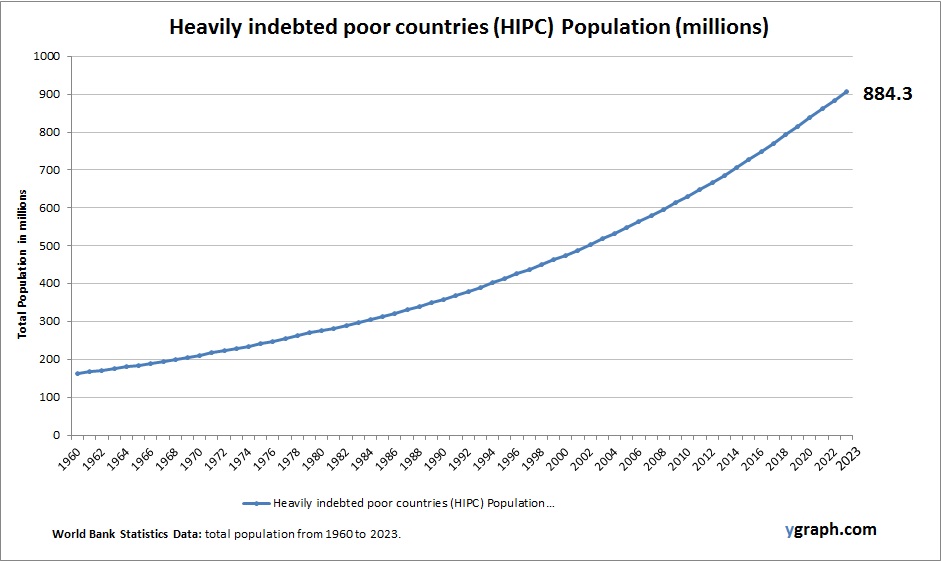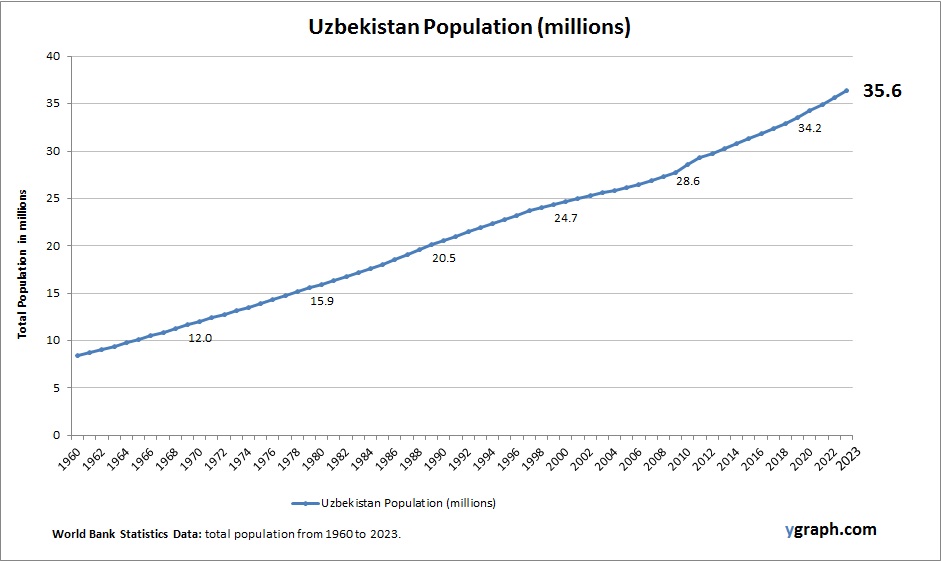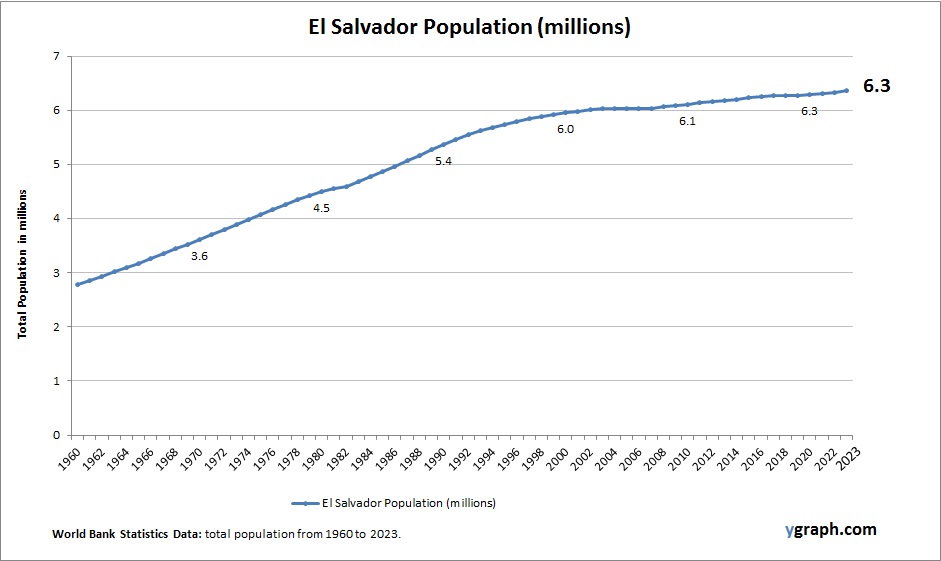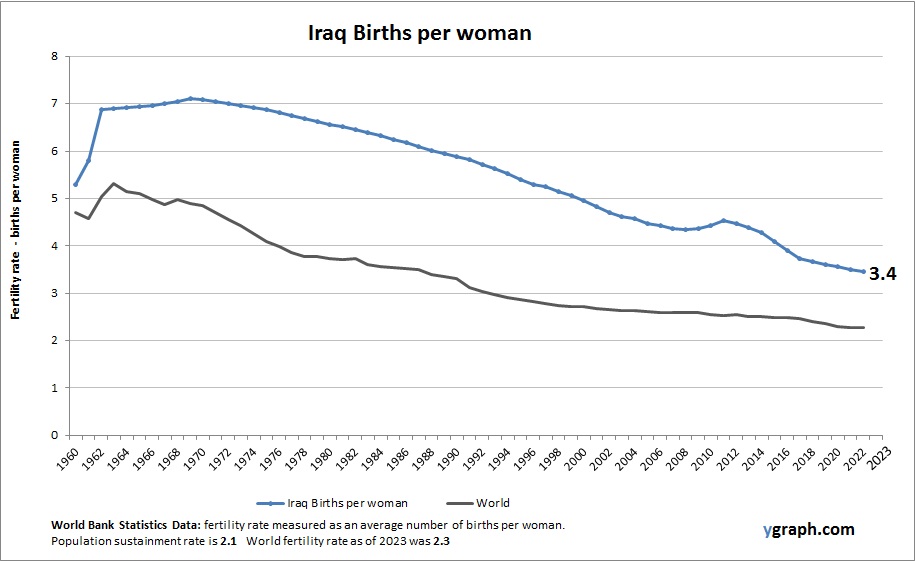This diagram presents Bangladesh Births per woman. The fertility rate statistics are compiled by World Bank. Based on the latest demographics info provided for Bangladesh.
Bangladesh has seen a dramatic decline in fertility over the past decades, thanks to strong family planning programs, education, and healthcare access. While rural areas still have higher fertility, national trends reflect continued movement toward replacement-level birth rates.
